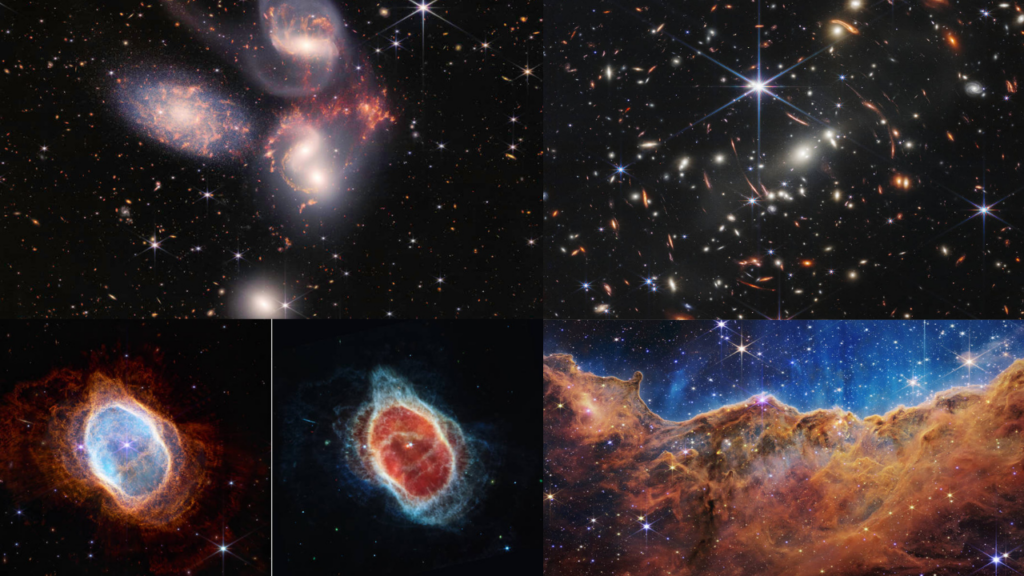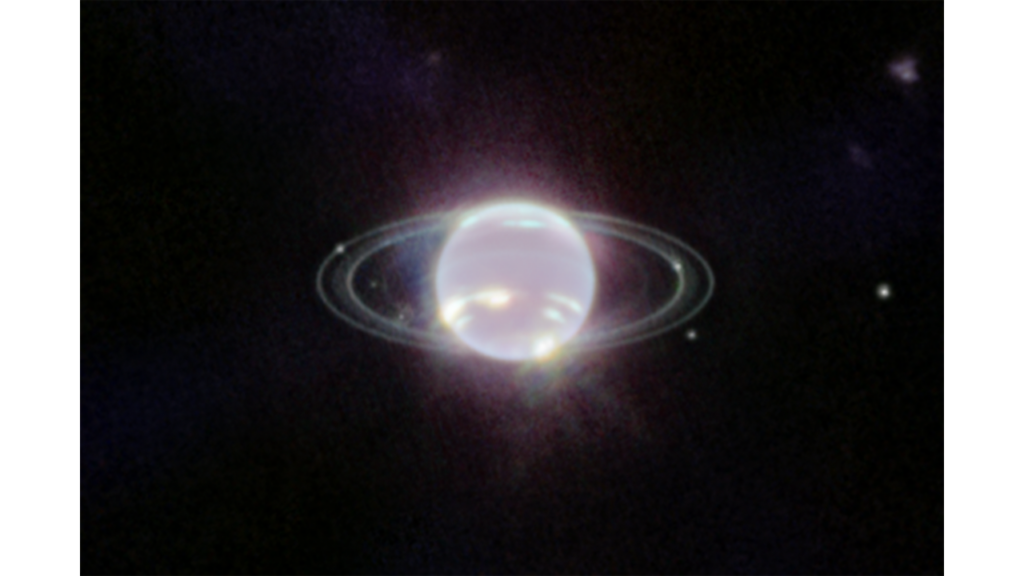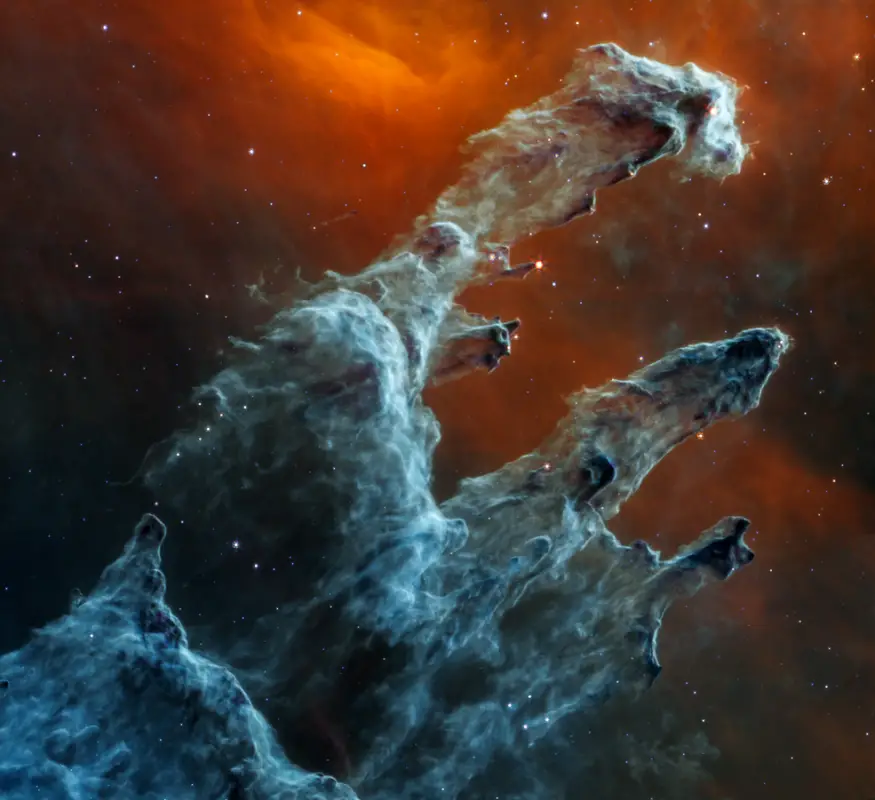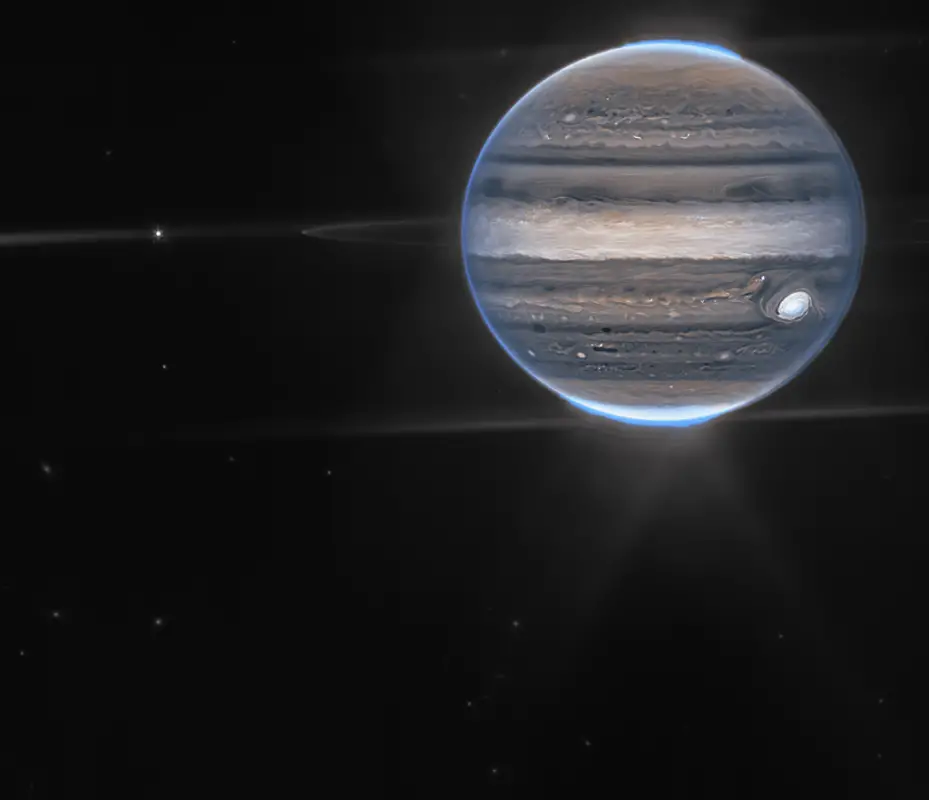James Webb Space Telescope (JWST) launched on 25th December 2021, after a series of delays. It was the most anticipated event in the world of astronomy, and with the hefty price tag of over $10 billion, it really needed to live up to expectations.
Fortunately, we only needed to wait until July 2022, when NASA released the first 5 images from the JWST and WOW were they incredible. You can see these images below, and also watch my reaction, and explanation of what the images are in the video below.
What is the JWST?
JWST is the latest space telescope developed by NASA, with the ability to see the oldest and most distant galaxies in our universe. JWST will help scientists understand the origins of the universe by searching for the earliest galaxies or luminous objects.
JWST will also look at how galaxies have evolved over time and observe the formation of stars from their first stages, to the formation of planetary systems.
JWST is able to explore the universe better than any other space telescope that’s come before thanks to its unique design of capturing light in infrared part of the light spectrum.
How Much JWST Cost
In total, JWST cost over $10 billion, a staggering 10 times the original cost estimate from NASA. The project took 17 years to deliver the final product. I imagine there were some pretty interesting project board discussions as time went on and money ramped up!
Initially, the project was given $1 billion, with a view to launch in 2010. A budget and timescale that seems quite laughable now, but as the project commenced in the early 2000s, those timescales didn’t perhaps seem too limiting.
By 2007, several years into the development of JWST, the spending had already surpassed $1.2 billion and the team at NASA weren’t even close to developing a working space telescope.
Why did JWST Cost so Much?
According to NASA documentation, most of the funding was spent on the development of the telescope, including modelling and component construction and testing before its launch.
Costs reached their peak in 2014, at almost $750 million, as the construction reached its peak. By 2016 costs did start to reduce as the construction was mostly complete. NASA will continue to spend approximately $200 million each year through to 2027 on JWST, or $1 billion post-launch.
It’s worth bearing in mind that while $10 billion is a mind boggling amount of money, it only accounted for a peak of 4% of NASA’s total budget. This percentage increase was due to NASA receiving less funding after the space shuttle program ended. During the space shuttle period, JWST only accounted for 1.5% of NASA’s total budget.
For comparison, NASA still spends more on the International Space Station each year than it does on JWST, the ISS accounted for 5.7% of NASA’s budget in 2021.
Gallery
If you want to try your hand at processing images from JWST, then you’re in luck! NASA’s images are public domain and you can download them for free, just don’t forget to credit properly if posting to social media. I have a handy guide that will help you through the process.

Since these images were taken, JWST has continued to blow minds with each new image it produces. Check out these incredible images of Jupiter, Neptune, the Pillars of Creation and more!




How JWST Takes Images
In this video, Dr Becky from the University of Oxford, expertly describes how JWST takes images.
JWST has three cameras. Two capture light in the near-infrared part of the light spectrum, and one in the mid-infrared. This helps JWST see back in time, as it’s able to peer through cosmic dust that is produced by nebulae and galaxies with one camera, but also able to capture that detail with another camera. The design is quite genius. It is this capability that sets it apart from the infamous Hubble telescope.
However, if images are captured using cameras in the infrared part of the spectrum, how are we able to view them? Doesn’t that make the images fake? Well, the short answer is no.
The longer answer is, the wavelengths of light captured are “shifted” to the visible light spectrum, a process not unlike that of transposing music to a different octave. With JWST’s cameras, it’s capturing light in wavelengths, some of those wavelengths of light are longer than others.
Since the red part of the visible light spectrum has a longer wavelength than that of a blue wavelength, we’re able to transpose that longer wavelengths can be shown as red. Transposing images in this way means our human eyes are able to view the cosmic beauty that JWST has captured.
Who was James Webb?
James Webb was a US Government official and a former Administrator of NASA, overseeing the first manned missions to Space, but leaving before the successful Moon landing of the Apollo missions.
He is quite the controversial figure, with many in the astronomy community wanting the James Webb Space Telescope renamed. This is due to Webb allegedly being complicit in the State Department’s purge of homosexuals from the federal workforce in the 1940s and 1950s, now referred to as the lavender scare.
An investigation was launched to look into the allegations, with more than 50,000 documents reviewed, which found no evidence of any wrongdoing. However, the controversy surround Webb still remains due to the nature of the allegations.
